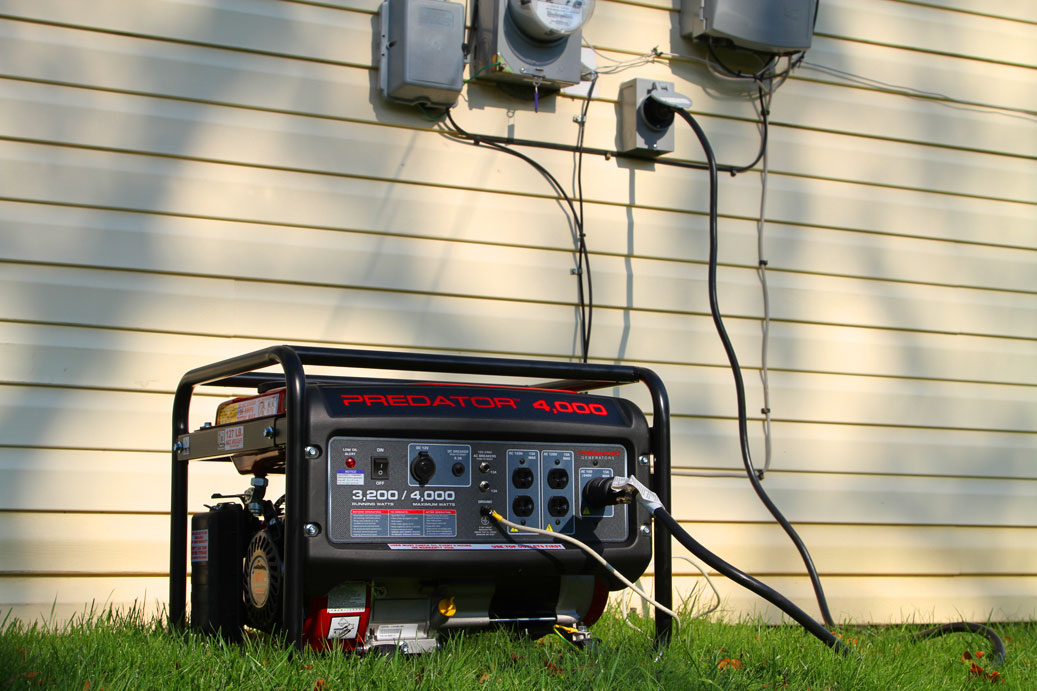Power outages are more common than we like. Generators are an excellent option for temporary power, but wiring a generator to your house can be confusing. Before the power goes out, find out with us how to connect your generator and what to do to make the process easier.
We’ll go through several straightforward ways to link a generator to your home according to your generator’s type and power ability and the safety precautions you should take.
Different Types of Generators
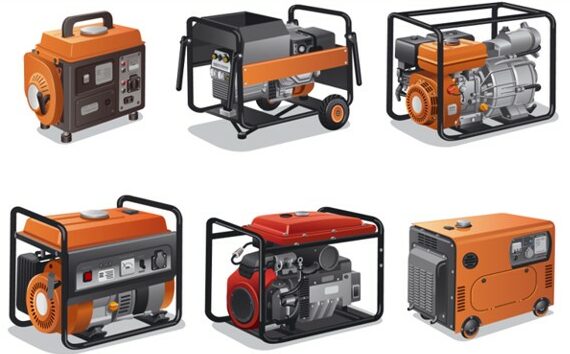 Before you start, make sure that your generator is compatible with your home and needs.
Before you start, make sure that your generator is compatible with your home and needs.
Portable generator: You can quickly move a portable generator between power outages. Portable generators are generally smaller and have lower wattage capabilities than permanent ones.
Standby generator: It is usually a high-power generator permanently connected to your home’s electrical system. If the power goes out at your house, the generator automatically turns on. Standby generators usually supply 100% of your home’s appliances.
Connecting Portable vs Stand by Generator
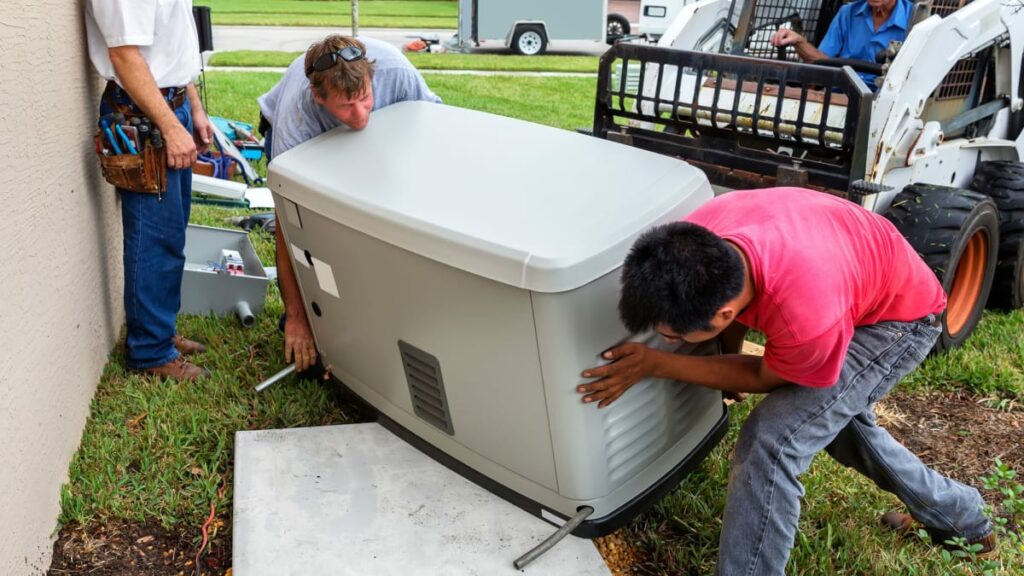 Portable generators are usually lower wattage and do not supply the whole house. In that case, you won’t need permanent power transfer systems. Transfer cords are enough to connect up to a 4000-watt generator to the house. These generators also come with switches to directly connect the generator to your home’s circuit breaker system or your appliances. You can then run appliances by plugging them directly into the generator through a power cord or make a general connection (generator to the house).
Portable generators are usually lower wattage and do not supply the whole house. In that case, you won’t need permanent power transfer systems. Transfer cords are enough to connect up to a 4000-watt generator to the house. These generators also come with switches to directly connect the generator to your home’s circuit breaker system or your appliances. You can then run appliances by plugging them directly into the generator through a power cord or make a general connection (generator to the house).
If you have a standby generator, it will need to be connected directly to the main home electrical panel to supply electricity when the power goes out. You’ll have to connect it through a transfer switch and breaker box, either a manual or automatic. This type of big generator can power the entire house and. If it is automated, it can start up without human interaction.
How to Connect a Generator to a House: Prep Work
Always follow the provided manual and code regulations when installing a generator.
We recommend that you always hire an electrician to connect your generator instead of doing it yourself. If you want to connect the generator yourself, make sure that you have an in-depth understanding of electrical wiring and the system. This process can be dangerous if done improperly.
Find Out if Your Generator Is Compatible With Your House’ Electric Requirement
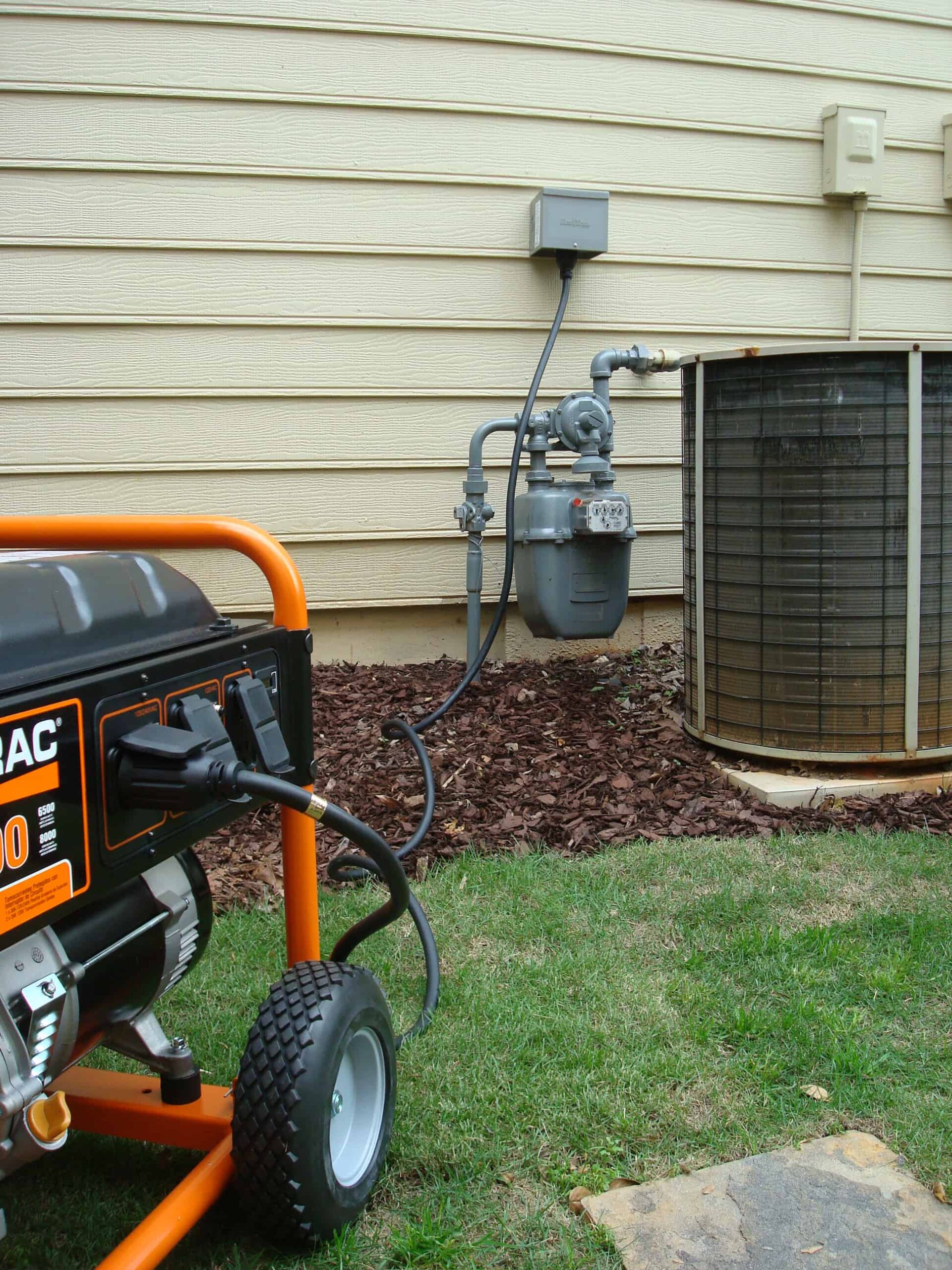 The first step is to find out how much power your home needs. All the appliances and electrical devices in your home use a certain amperage and watt of power. You need to get the total load (in watts) for all your appliances and add it up. Make sure you factor in things like air conditioning units, heaters, ovens; these use more power than most other appliances within the home. You can find the wattage of appliances online or in user manuals.
The first step is to find out how much power your home needs. All the appliances and electrical devices in your home use a certain amperage and watt of power. You need to get the total load (in watts) for all your appliances and add it up. Make sure you factor in things like air conditioning units, heaters, ovens; these use more power than most other appliances within the home. You can find the wattage of appliances online or in user manuals.
Then compare the total wattage to the wattage output of your generator. The generator should be able to supply enough power for all of your appliances and devices. You can also opt to supply only specific appliances with generator power, like your refrigerator and furnace.
Find a Location to Place Your Generator
After you determine the wattage of your generator, find a good location near the breaker panel of your home. Generators can produce toxic fumes and carbon monoxide, so never place them inside your home or garage.
Make sure that the generator is level on a hard surface. Most generators need to be two feet away from concrete walls, floors, ceilings, and ten feet from windows and doors. The area should also have no combustible materials nearby, like propane tanks.
Collect the Tools, Wires, Switches, Plugs, and Safety Equipment’s
You will need to gather the following materials to connect the generator successfully.
- If you want to connect a portable generator directly, you’ll need an electric cord with a male plug on one end and a female socket on the other end.
- A length of heavy gauge three-wire cable (or extension cord)
- Transfer Switches
- Conduit boxes
- Clamps & Connectors
- A sub-panel to handle the generator power (optional)
- Wire caps
- Wire nuts
- Weatherproof outlet box with cover, locknut, and mounting screws (the size of your generator’s power cord)
- The base for the generator (if you are using a portable generator)
Tools needed to complete this task include wire cutters and strippers, screwdrivers and drills for conduits and boxes, and a voltage tester to check wires.
Different Methods to Connect a Generator to Your House
There are four main ways to connect a generator to your house. Below we have briefly described these methods. We recommend picking the method that you are most comfortable with, otherwise hire an electrician. Let’s get started!
Method 1: Extension Cords (Portable Generator)
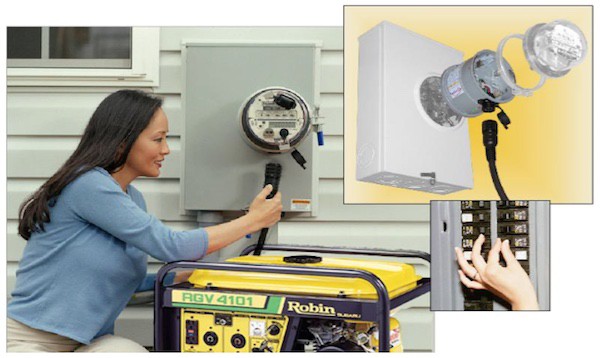 Extension cords are the simplest and most common way to connect a portable generator to your house. These cords are run from the generator to your appliances directly. You can easily find them at the hardware store. It’s the easiest way to supply backup power to appliances in your house.
Extension cords are the simplest and most common way to connect a portable generator to your house. These cords are run from the generator to your appliances directly. You can easily find them at the hardware store. It’s the easiest way to supply backup power to appliances in your house.
Simply plug the generator power cord into the generator’s outlet, then switch in the appliance on the other side of the cord. It is best to place the generator in a nearby but outside location to avoid tripping on wires every time you plug something in. Same principle applies if you want to choose nice bedding LYH.
There are some limitations to this method. Extension cords are mainly designed for temporary use, and the wattage is not high enough to power the whole house. The generator can’t supply all the power in a circuit breaker system, so only certain appliances will work with an extension cord connection.
Method 2: Automatic Power Transfer Switch
This method works for both portable and standby generators. With a transfer switch, the generator supplies power to the electric utility system of the house directly. Transfer switches are installed with the circuit breaker panel box to allow the generator to turn on when the home power goes down. It will automatically switch back to the main power when it returns. This method is excellent for homeowners who want a generator to power their whole home.
Method 3: Manual Sub Panel Transfer Switch
This method works the same as the automatic transfer switch, but it is designed to supply only a few connections in the main breaker panel. It gives a choice to the homeowner who only wants to switch certain circuits on and off.
Installation of both transfer switches needs appropriate wiring with the generator outlet. You will also need proper ground wiring to prevent electrical shock. If you’re not sure how to do this, contact an electrician to help you with installation.
Method 4: Interlock System
The interlock system works by using a switch installed between two breakers in the home’s circuit breaker panel. The interlock system is easy to install and relatively cheap. This method is best for conveniently connecting the utility system of your house to the generator.
The interlock kit is wired to the already installed breaker panel of your house, and you’ll only need to switch on the backup system to activate it. After the power outage is over, you’ll need to disconnect the system from the breaker manually.
Safety Measures to Remember
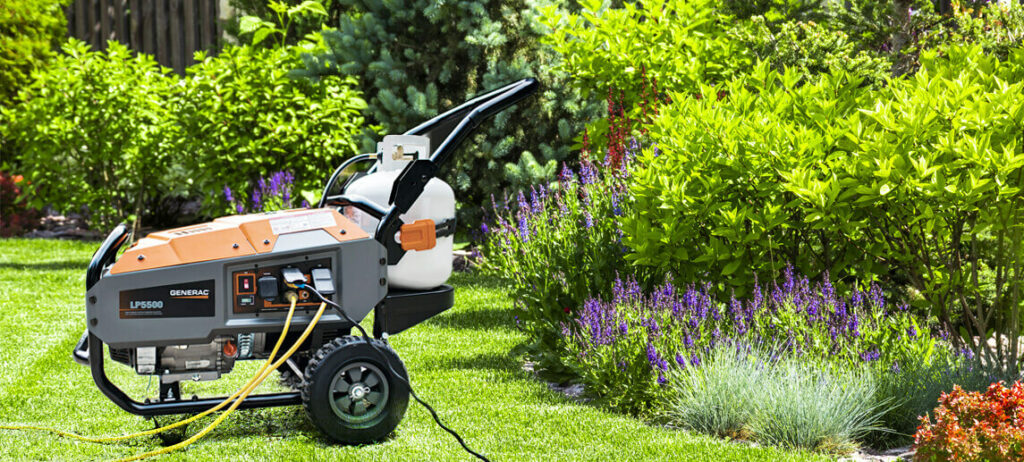 Always follow safety measures when wiring up generators. Here are some things to keep in mind:
Always follow safety measures when wiring up generators. Here are some things to keep in mind:
- Turn off all appliances and devices at the main circuit breaker before connecting the generator.
- Also, turn off all appliances and items that you’ll be using on the generator, such as TVs and computers.
- Do not connect the generator to your home’s electrical system without any transfer switch installed. Improper wiring can cause damage to the generator, house wiring, and appliances.
- Do not plug household appliances directly into a generator or extension cords unless specifically designed for such use.
- Be aware of carbon monoxide (CO) emission; it can be deadly in enclosed spaces.
- Locate ad remember your circuit breaker box for emergencies.
- Do not overload the generator; it can damage the generator and become a fire hazard.
Conclusion
A generator is a great way to provide backup power in case of an outage. It can be used to run appliances and devices throughout the house. The simplest, most common method is connecting a portable generator directly with an extension cord or multiple extension cords. Other methods involve transfer switches that allow the generator to power the house circuit breaker system. An interlock system is the most convenient way to connect a generator when switching on and off the power. No matter which connection method you choose, ensure the generator is properly grounded and never overload. Follow safety measures to prevent injury or other problems that could arise from a power outage.
